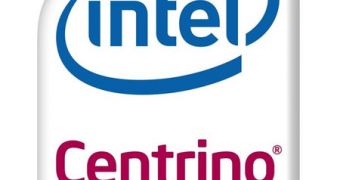Intel's mobile roadmap outlines the new Centrino 2 platform that will arrive on the market in June. The difference does not reside in the branding only, and the Centrino update will pull out the really big guns: processors running at 1.2 GHz while drawing up 5.5 watts of power, DisplayPort connectivity as well as graphics power boosts.
During the last three years, the chop manufacturer would announce its new products in January, with an updated version to follow in June. The moment could not be more strategically set, given the fact that June is a critical period for notebook vendors, who can barely meet the increased demand triggered by the upcoming school semester.
Intel announced earlier this year its first generation of desktop, mobile and server processors built on the 45-nanometer processing node. Rumor has it that the chip manufacturer will shift from the older Santa Rosa Centrino platform to the newer refresh in the Montevina Centrino 2.
According to Intel's notebook manufacturing partners, the June refresh will come with Intel's brand-new Penryn processors saddled on a 1066MHz front-side bus. The new platform will also include new motherboard core logic to suit the hafnium-infused 45-nanometer chips. The new chips will be bundled under the Montevina Centrino 2 and Centrino 2 vPro brands.
The chips in the T series will be included in the "Performance" sector and will come with a thermal envelope of 35 watts, while the P family will be optimized in terms of power consumption (25 watts power drain). The P9500 chip reaches the optimal equilibrium between power consumption and pure force. It will run at 2.53GHz core clock speeds and will come with 6 MB of L2 cache at a thermal design power of 25 watts.
The refresh will also include a small-form factor segment, and one of Intel's engineers claims that the U3300 chip will power the ultra-slim, MacBook Air-like tablet PCs and ultra-portable notebook systems. The U330 will run at 1.2 GHz with 3MB of L2 cache and will draw only 5.5 watts of power.
The changes don't end here. The already-introduced notebooks will become old stuff, given the fact that the second-generation Penryn mobile processors will work on Socket B motherboards only.

 14 DAY TRIAL //
14 DAY TRIAL //